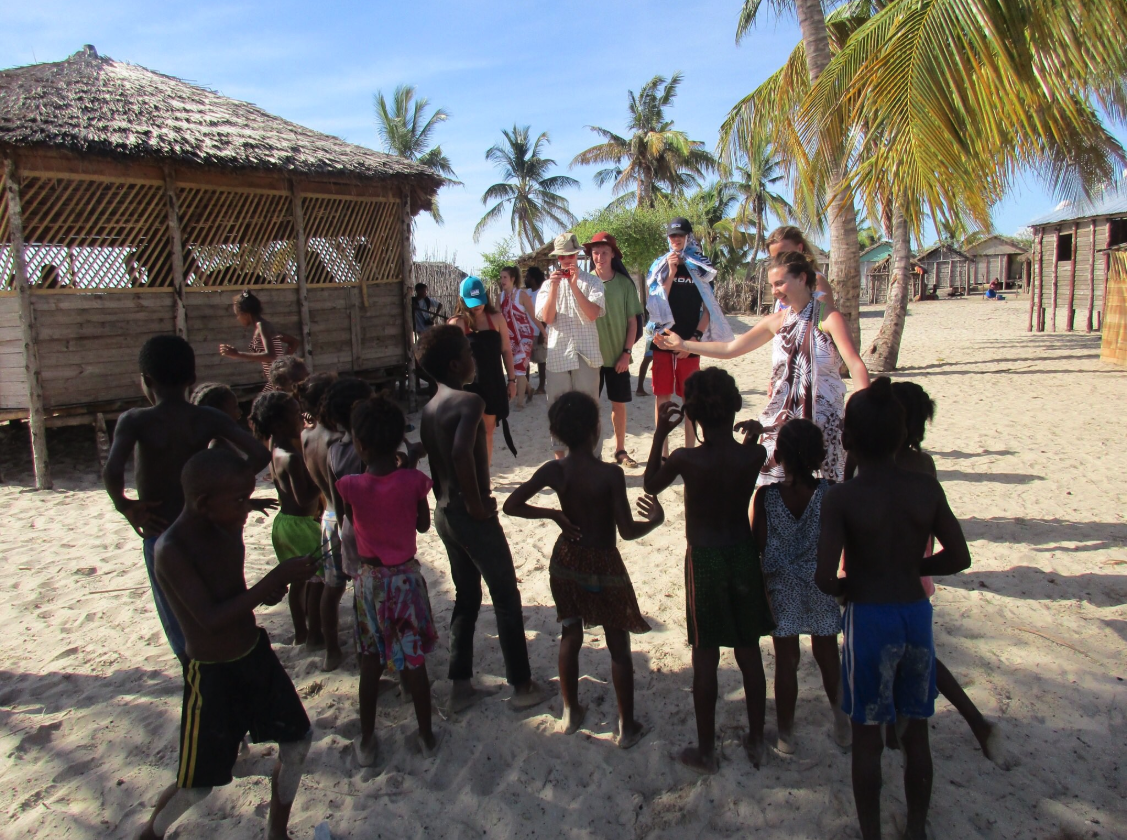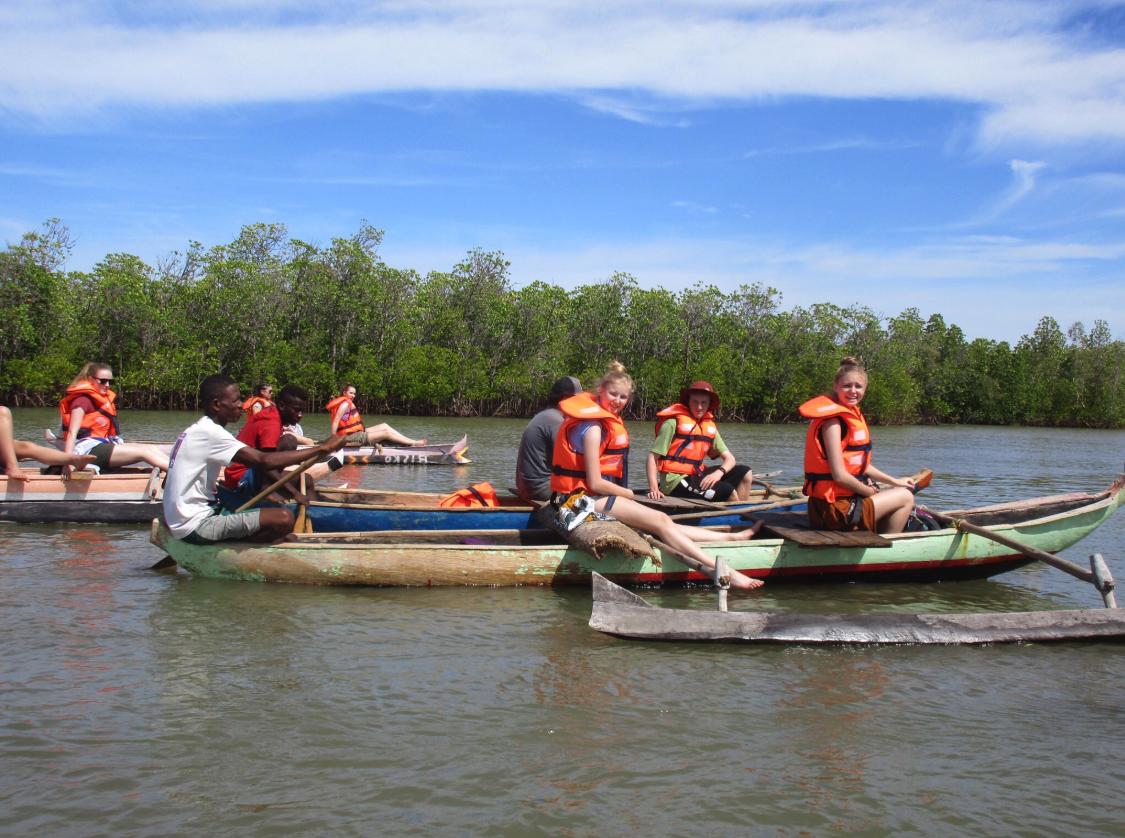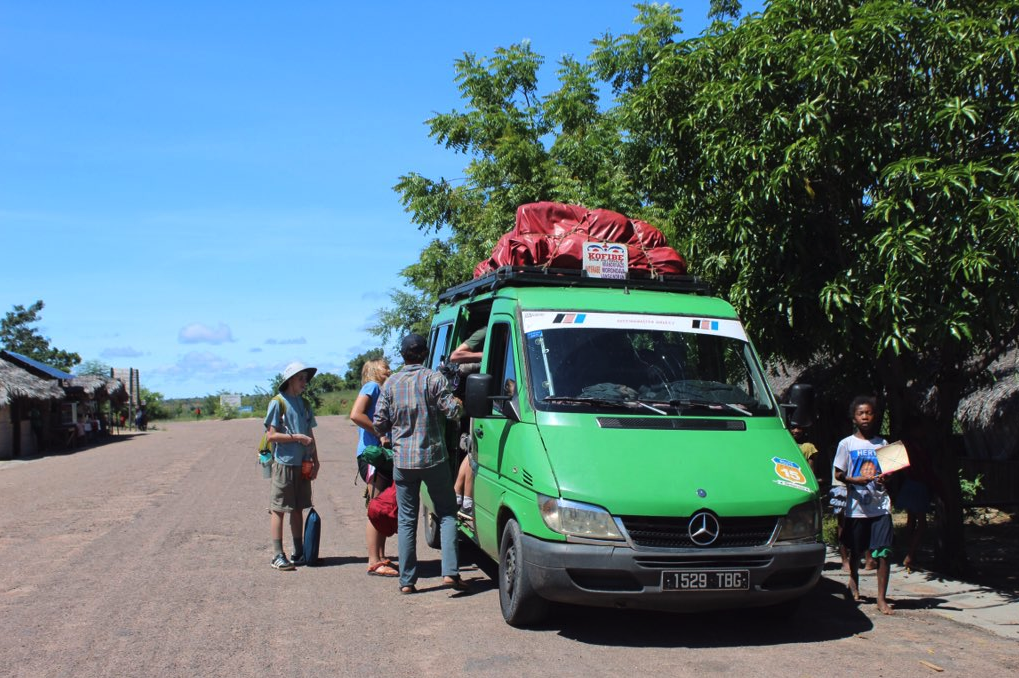By Jules T. ‘21:
After our morning adventures, we sat down in a standing hut to eat lunch. The women of the village prepared the meal. We had stuffed crab, French fries, and rice as an entree. Stuffed crab is one of Kilvalo’s favorites.
While we ate lunch, the fishermen of World Wildlife Fund talked to us. They taught us about restoration of mangroves. We then got to plant mangroves. They had us stand one meter away from each other in one long line. It was very hot, sweaty, and sandy, but a great experience. After finishing the planting, we started talking to the kids. We taught them names of singers and lyrics from songs. Mr. Benson also taught the kids hokey pokey, and they loved it! It was then time to go back to our homestay families. We walked back to our canoes and gave thanks to the people of Kilvalo. It is very interesting to me how these people can live in a small place with few people and not want to leave and explore. I think all these people have such a strong bond with one another. The Kilvalo have an incredible tiny community.
When getting into the canoes and beginning the ride back, we realized how much the water went down during low tide. Sometimes the canoe sailor had to get out of the canoe and push us through mud. Once back on land, we drove away in the 4-wheelers. It was around sunset when we drove past the Baobab Avenue for the second time.
We had a great day filled with experiences. Though the activities we did today are unforgettable, my favorite part of the day was returning back to my homestay family and being welcomed. It gave me a feeling of having my own family and home in such a foreign place. Today was definitely my favorite day so far.
By Grayson G. ’22:
For this blog, I will be covering March 13, 2019, when we went to Baobab Avenue and a fishing village. For the car ride, we woke up at 5:00 a.m. hoping to get to Baobab Avenue before sunrise. Sadly, we did not make it in time, but we still got to see some of the African sunrise. While we were there we took plenty of pictures and saw how thick baobabs are. Once we saw the baobobs, we kept driving to a fishing village where then we took a boat to another village called Kivalo. Yet on the was to the second village, we went with fishermen and learned about the types of mangroves and how they fished. Once we arrived, we were welcomed by the village with a song and then went to the beach. On the way to the beach we saw a ton of crabs.
By Natalia M. ’20:
We woke up early in the morning at 4:30 a.m. We got up early so we could get to Antsirabe on time. After roughly three hours of driving, we stopped to get breakfast, but before we could leave our bus broke down. After many phone calls, we were able to arrange two smaller buses to come pick us up. We spent many hours on hot buses on our way to Antsirabe. We stopped for lunch in a smaller town and enjoyed many delicious dishes. When we finally got back to Antsirabe, we stayed at the Lovaspa just as we had before. The two dinner goops went to two separate restaurants; one group went to a French place and the other went to an Italian place. Then the groups met back up at the Lovaspa. People unpacked and got ready for bed and were getting ready for the drive to Ranomafana the next morning.
See more photos from Madagascar ECS here.
Follow all of the student ECS Blogs on Campus News!








